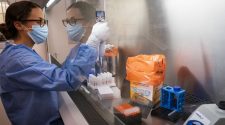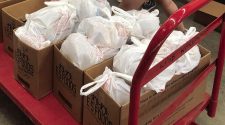A pioneering United Nations discussion ‘The Future for
Fruit & Vegetable Kai Systems in Aotearoa’, has
identified a number of pathways for our fresh produce
industry towards achieving a sustainable future for all
Kiwis.
Hosted by United Fresh, the UN Independent
Dialogue brought together for the first time experts from
across the entire supply chain from production to retail
along with tangata whenua representatives and leaders from
organisations which support vulnerable communities such as
food banks and churches.
Jerry Prendergast, President
of United Fresh and curator of the event, says that the
recent Dialogue provided the industry with a valuable
opportunity to include representatives of the most
disadvantaged in Aotearoa.
“The Covid-19 lockdowns
taught us important lessons about our food systems. Empty
supermarket shelves in some grocery categories were a sharp
reminder of how important it is to maintain a steady supply
of nutritious food to each and every New Zealander,” he
says.
“Meeting with representatives of organisations
at the coalface of work with our most deprived families has
provided us with greater insight into the challenges some
Kiwis face in putting healthy food on the table each day,”
says Prendergast.
The UN Dialogue covered five
distinct areas of discussion. Access to fresh fruit and
vegetables for all, sustainable access to suitable and
affordable land and water resources, the use of labour and
technology, the health and nutrition benefits of 5+ A Day
for all Kiwis and the resilience of our supply chains in the
face of a major crisis were all explored in five breakout
groups.
“The areas of discussion were deliberately
broad for this Dialogue. While we could have easily focused
on just one or two of these critical topics, the UN set us
the challenge of working on all five and identifying future
areas to work on,” says Prendergast.
“Our
collaboration with tangata whenua representatives, and
particularly the participation of Dr Nick Roskruge, Chair of
Tāhuri Whenua – The National Māori Vegetable Growers
Collective as Co-Convenor of the Dialogue has been critical
in developing a greater understanding of kai sovereignty and
developing solutions that acknowledge the principles of Te
Tiriti o Waitangi,” he says.
Outcomes relating to
access to fresh fruit and vegetables included plans to
create a communications network that deliberately includes a
te ao Māori voice and identifies gaps in distribution
channels to rural and vulnerable communities.
A food
system that emphasises the importance of nurturing our land
and water resources was also discussed.
Technological
advances and labour shortages are also at the forefront of
concerns about securing the supply of fresh fruit and
vegetables, particularly the balance that needs to be
achieved by bringing new talent to the industry with a high
skillset to operate in a highly technical
environment.
“Training our rangatahi to work within
complicated supply chains which accurately trace food from
field-to-table is a priority for our $6 billion horticulture
industry,” says Prendergast.
“Along with evolving
processes, we’re also looking to the future of our
changing tastes as we address the best way to increase
consumption and encourage Kiwis to eat their 5+ A
Day.
Innovative programmes such as Fruit and
Vegetables in Schools have been identified as an excellent
way to share the health and wellbeing benefits of fresh
produce,” he says.
The resilience of our fruit and
vegetable supply systems in times of crisis was also
examined during the Dialogue.
“As a net exporter of
food, with excellent growing conditions and fertile land,
Aotearoa is well-positioned to feed our population through
good times and bad. We’re focused on working together with
a collective of stakeholders to build even greater
resilience within our current system and future-proof the
industry for the benefit of all Kiwis,” says
Prendergast.
© Scoop Media

















